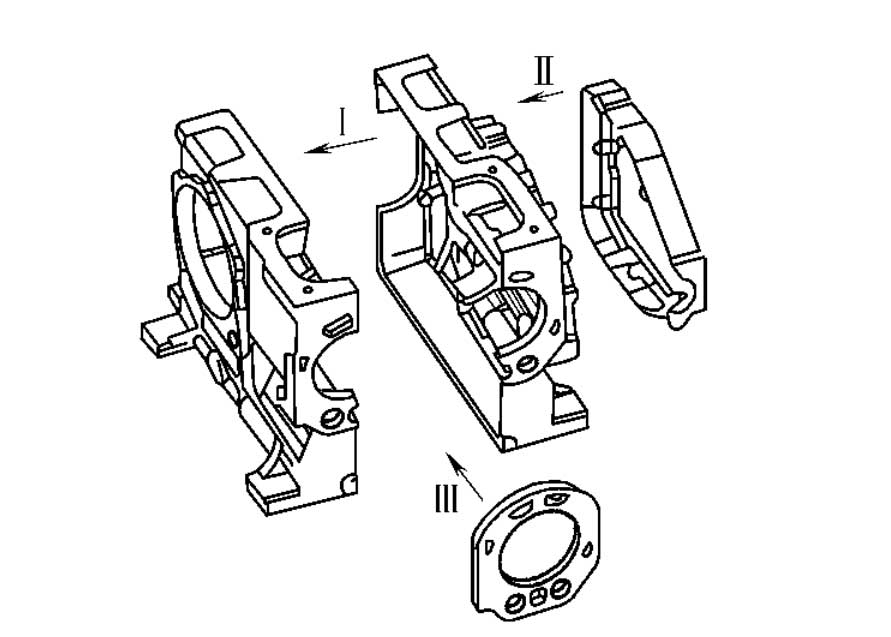What is lost foam casting
Lost foam casting, also known as full mold casting, is a new casting technology for precise molding. It is to bond and combines foam models similar in size and shape to castings to form model clusters, brush refractory coatings, and after drying, bury them in Vibration modeling in dry quartz sand, forsterite sand, or pearl sand, pouring under negative pressure, vaporizing the model, liquid metal occupying the position of the model, solidifying and cooling to form a casting, a new casting method. Read More: Lost Foam Casting Wikipedia

The lost foam casting technology is to use foamed plastic (EPS, STMMA, or EPMMA) polymer materials to make a solid mold that is exactly the same as the structure and size of the part. Embedded in dry sand molding, compacted by three-dimensional micro-vibration and negative pressure, and poured molten metal in the absence of mud cores, live blocks (or even risers) Negative pressure), a new one-time molding casting process that causes the foam plastic mold to be heated and vaporized and then replaced by metal.
For lost foam casting, there are many different names for [lost foam process (USA), Policast process (Intaly)], etc.; referred to as EPC casting
The lost foam casting technology is called “the new casting technology in the 21st century” by the casting industry, “a trump card that makes the casting technology invincible in the competition with other molding methods and alternative materials”.
Six advantages of lost foam casting technology
Lost foam casting technology has the following characteristics:
- Good casting quality and low cost;
- The material is not limited, and the size is suitable;
- High dimensional accuracy, smooth surface, less cleaning, saving processing time;
- Internal defects are greatly reduced and the organization is compact;
- Can realize large-scale, mass production;
- The automatic assembly line is environmentally friendly, can greatly improve the working environment, reduce labor intensity, and reduce energy consumption.
Therefore, compared with traditional casting technology, lost foam casting technology has unparalleled advantages, it conforms to the general trend of the development of casting technology today, and has broad prospects.
History of lost foam casting technology
- In 1956, the American H.F.Shoyer started the experiment of using polystyrene foam for casting, and it was successful, which aroused great interest. It was announced to the public in the form of a patent in 1958, and it was called “no cavity casting”.
- In 1962, the Federal Republic of Germany introduced patents from the United States, and the lost foam casting method began to be developed and applied in industry.
- In 1990, 6% of aluminum alloy castings were produced using the lost foam casting process.
- In 2007, 29% of aluminum alloy castings will use this process.
- Since 1997, gray cast iron and nodular iron have also increased significantly. At present, about 2% of gray iron castings are produced by the lost foam process.
- ……
Application of lost foam casting technology
At present, lost foam casting technology is mainly used in the following aspects in China:
Seven types of alloys for castings
Aluminum alloy, special cast iron (high chromium cast iron, etc.), gray cast iron, nodular cast iron, special cast steel (high Mn steel, Ni-Cr heat-resistant steel), ordinary carbon steel, low C steel, and stainless steel.
12 typical castings with successful applications
- Anti-wear castings – grinding balls, liners, hammerheads;
- Heat-resistant castings — furnace grate, heat treatment bottom plate, material frame, etc.;
- Pipe fittings—— gray and ductile iron pipe fittings of various specifications (425~1200mm);
- Valve castings——cast steel valve body, valve cover, ductile iron valve body, valve cover;
- Construction machinery parts—— bucket teeth, gears, racks, forklift steel castings;
- Box (shell) body castings——gearbox casing, differential casing, steering casing, motor casing, fire hydrant casing, shell casing, etc.;
- Automobile brake system castings——brake drum, brake disc;
- Crankshaft——compressor crankshaft, automobile engine crankshaft;
- Intake and exhaust pipes——aluminum intake manifold, ductile iron 4-cylinder automobile exhaust pipe, gray iron 6-cylinder diesel engine exhaust pipe;
- Bracket castings——railway 25 steel support plate, automobile spring bracket, etc.;
- Rear axle castings——cast steel, nodular iron rear axle housing;
- Cylinder block, cylinder head castings——compressor block, single-cylinder engine block, cylinder head, automobile 4-cylinder block.